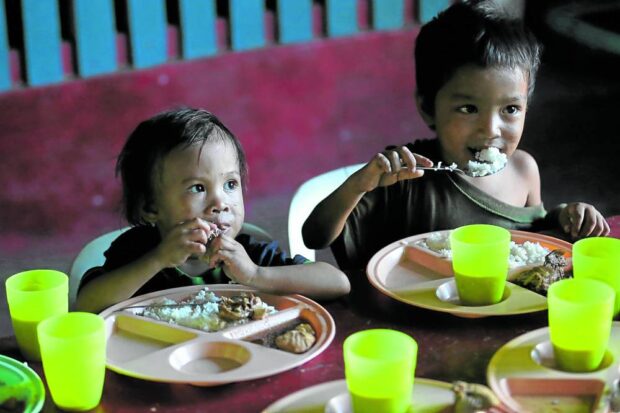PH borrows P10 billion for malnutrition reduction program

MANILA, Philippines — The Philippines aims to lower malnutrition incidence in communities with a high burden of stunting through a P10-billion World Bank-funded multisectoral project to be spearheaded by the Department of Health (DOH) and the Department of Social Welfare and Development.
Launched on Wednesday, the four-year Philippine Multisectoral Nutrition Project will cover 235 towns with high rates of stunted children and pregnant women to address malnutrition in the country.
President Ferdinand Marcos Jr. led the launch of the project at the Manila Hotel, saying his administration is committed to investing in the country’s 110-million-strong population, considered the main drivers of the economy.
Citing the recent Expanded National Nutrition Survey, which took note of the high incidence of stunting among other health issues among Filipino children, President Marcos said the government must tackle malnutrition, which is linked to long-term adverse developmental impacts.
“This is the reason why this administration has put a high priority and considered it of strategic importance that lies in the areas of food security, health care, and education, amongst others,” the president said.
Article continues after this advertisementAccording to DOH officer in charge Maria Rosario Vergeire, one in every three Filipino children under the age of 5 or about 30 percent are considered stunted. There are an estimated 10 million kids in this age group, she said.
Article continues after this advertisement“The World Bank has implemented this in other countries… Hopefully, we get that outcome. But we plan to start slow[ly] because in the first or one and a half years, we’re going to prepare [by doing] baseline assessment[s] for these 235 municipalities,” Vergeire told reporters on the sidelines of the event. The assistance to be given to beneficiaries will be performance-based grants and support packages in the form of primary healthcare services and nutrition commodities.
“We cannot expect communities without proper access to food, education and livelihood to house healthy citizens. Consequently, we cannot expect these citizens to nurture properly nourished children,” Vergeire said.
Taking off from similar initiatives in other countries, the Philippines’ nutrition project hopes to replicate Indonesia’s accomplishment of bringing down stunting by as much as 8 percent after three years.
But according to Vergeire, no targets have been set yet because a baseline assessment of the towns covered will have to be conducted in the first year of implementation to get a picture of their nutrition status.
The World Health Organization classifies stunting in children, defined as being shorter than their age, as a “high public health significance.”Stunting can lead to mortality from infections, as well as cognitive, social and emotional developmental delays, a lack of physical stamina in adult years and the increased likelihood of low economic productivity, according to the DOH.
A 2021 survey by the Department of Science and Technology’s Food Research and Nutrition Research Institute found that more than half of stunted children were from the poorest and poor households in the country.